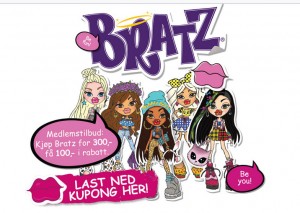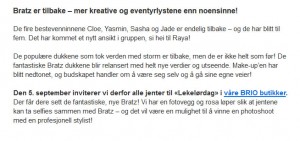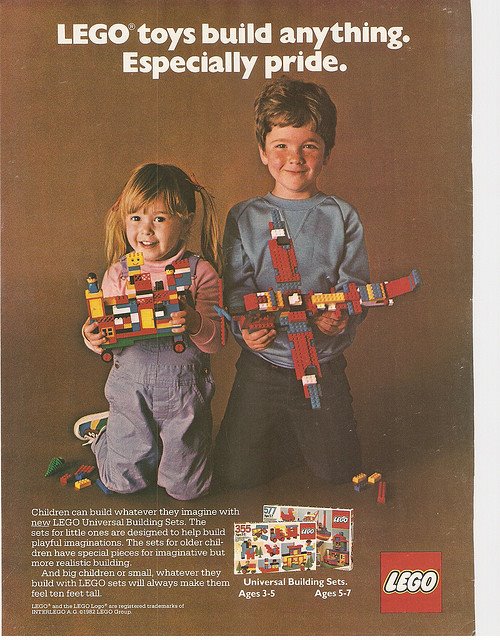 De “nye” Bratz er her, kan Brio fortelle meg denne uken. Bortsett fra at illustrasjonen er tegnet, og ikke bare et bilde av dukkene, kan jeg ikke si jeg ser noen stor forskjell, men så har jeg heller aldri studert “orginalen” noe særlig inngående. Trutmunn har de i alle fall. Men skal vi tro Brio er de mindre utseendefiksert enn før:
De “nye” Bratz er her, kan Brio fortelle meg denne uken. Bortsett fra at illustrasjonen er tegnet, og ikke bare et bilde av dukkene, kan jeg ikke si jeg ser noen stor forskjell, men så har jeg heller aldri studert “orginalen” noe særlig inngående. Trutmunn har de i alle fall. Men skal vi tro Brio er de mindre utseendefiksert enn før:
De populære dukkene som tok verden med storm er tilbake, men de er ikke helt som før! De fantastiske Bratz dukkene blir relansert med helt nye verdier og utseende. Make-up’en har blitt nedtonet, og budskapet handler om å være seg selv og å gå sine egne veier!
Helt nye verdier og utseende, faktisk. Og det handler altså om å være seg selv. Og hvordan velger Brio å feire denne revolusjonerende nye filosofien?
Den 5. september inviterer vi derfor alle jenter til «Lekelørdag» i våre BRIO butikker. Der får dere sett de fantastiske, nye Bratz! Vi har en fotovegg og rosa løper slik at jentene kan ta selfies sammen med Bratz – og det vil være en mulighet til å vinne en photoshoot med en profesjonell stylist!
Selfies og photoshoot. Jeje. Rosa løper, dessuten, for det er bare mannlige stjerner (eller skal vi si bare “stjerner”, i motsetning til “kvinnelige stjerner”) som kan gå på rød løper.
Lørdagen er over, og vi unnlot å besøke vår lokale Briobutikk. Jeg kommer vel ikke akkurat til å løpe ut og kjøpe den “nye” Bratz til ungene, heller. Jeg tror det finnes bedre måter å lære dem å være seg selv og gå sine egne veier på.

